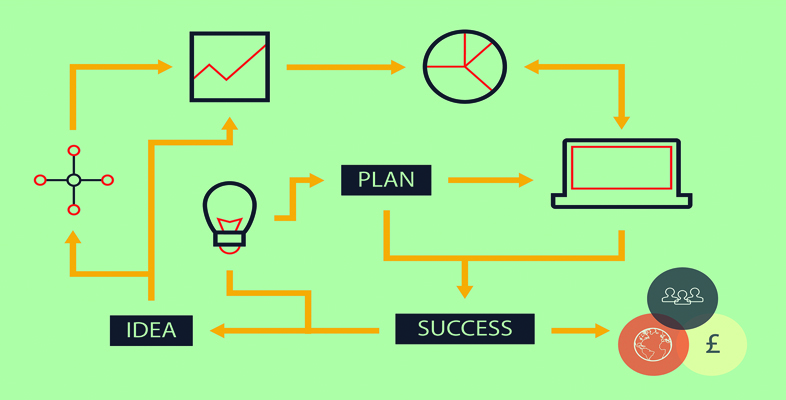1 The value proposition (VP)
In Session 3 you were introduced to the business model canvas and this explained the value proposition at the centre of your business model. The value proposition is the answer to the question – what is it you are trying to build and for whom? It goes beyond an idea or product and expands to:
- what problem(s) or need(s) you are solving or meeting for customers
- how your idea will either alleviate the problem or provide a gain for customers
- who the customers are whose needs or problems you are focused on.
The best value propositions are clear about these points and provide a compelling reason for a big enough group of customers to choose your business, product or service over another. To help illustrate this point, think of the spreadsheet and social media apps as examples.
The spreadsheet was originally developed for accountants to organise and manipulate a lot of complex data that would otherwise be very time-consuming and problematic to do manually. It solves the problems of complexity, manual data inputting, errors and duplication of data. So it is a very convenient technological resolution to a problem that has now become universally adopted for a much wider audience.
As human beings, however, we have many different kinds of need – e.g. the need to be entertained, to socialise and communicate with others. Social media apps arguably have provided a solution to some of these needs.
Arguably, the recent pandemic and indeed lockdown, and the prevailing economic conditions have taught us all that our perceptions of value can change. The concept of the frontline or essential worker has shifted attitudes to work. The furlough scheme has also changed dynamics in many ways. Changes in the supply and demand for some products and services due to shortages or delivery difficulties in the supply chain create both headaches for businesses and customers, but potentially also opportunities along the supply chain. The shift to working from home and alternative means of delivering services and especially the rise in online shopping have meant that there are major shifts in consumer and customer attitudes and behaviours and as a result a need for businesses to reflect on their business models and their value proposition.
One thing you might notice is that where you do solve a universal need, the target audience could be very large indeed as opposed to a very niche group of customers.
Activity 1 Reflecting on how a major event impacts on your idea
Take a few minutes to consider how a major event such as the Covid-19 pandemic has had an impact on your life as a consumer or customer. Have you noticed a shift in your own values, buying behaviour or priorities? How do they impact on your choice of suppliers and your own notions of value?
Discussion
Here are just a few trends that have been reported, which suggest that even in a crisis and adversity such as a global pandemic, opportunities arise for some people and businesses.
As a result of lockdown, there was a rise in pet ownership as reported by the Pet Food Manufacturers Association. As 3.2 million UK households introduced a new pet into their homes (BBC, 2021) shortages in dog and cat food were also reported as a result of increased demand.
Some restaurants and pubs unable to open to table-seating customers, pivoted to provide a takeaway service.
There was an initial shortage of grocery delivery slots as supermarkets were unable to keep up with increased demand.
Millions of people who switched to home-working had to equip themselves to work from home. This provided a boom for home office furnishings and equipment, home refurbishment, the need for stable internet connections and so on. However, the bigger question for many people is to what extent some of these changes to the world of work may be lasting. There are some big societal questions arising from this question and also opportunities for some.
Lastly, HR Magazine reported that following lockdown 51% of UK employees who were furloughed are considering a career change (Greedy, 2021). Partly driven by a feeling of insecurity over their future jobs, and partly by a desire to reskill and develop themselves. Some will inevitably have decided to take the plunge and pursue their own business idea!
Next you will consider how mutual value is created.
